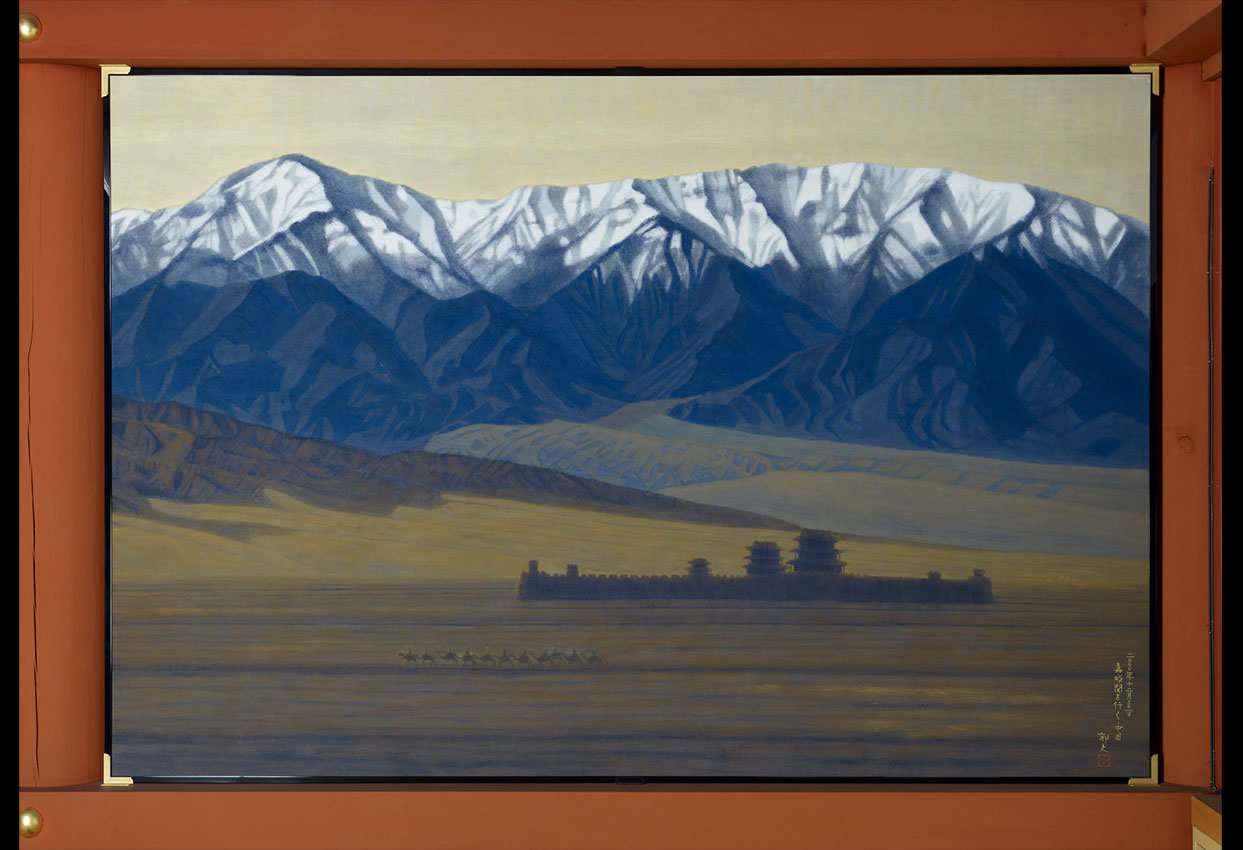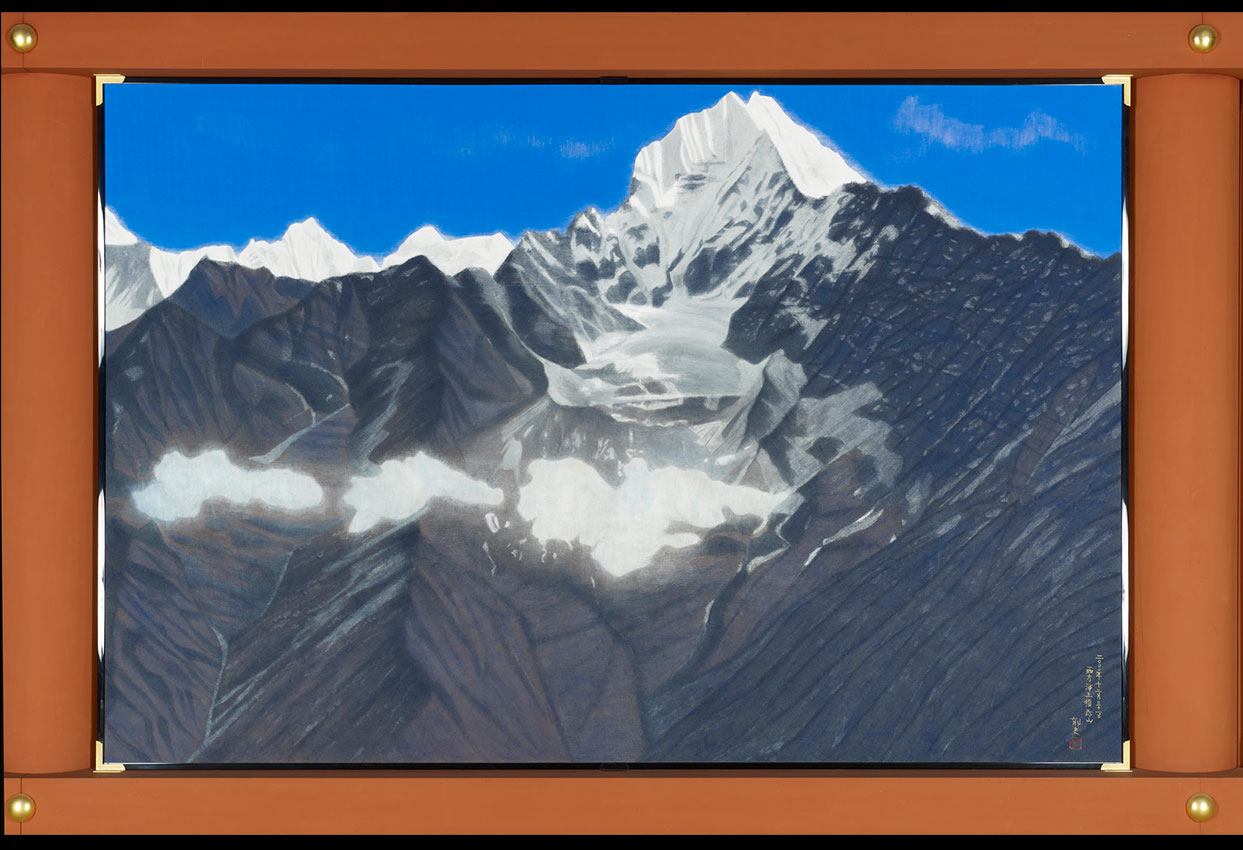17. Wall Paintings of Genjo’s Travels
Another feature of the complex is a series of wall paintings by Hirayama Ikuo (1930–2009), the celebrated artist who worked in the Nihonga tradition of Japanese painting. Hirayama is best known for a large body of work depicting scenes from the Silk Road based on sketches done during more than 150 pilgrimages he made along the historic trading route in order to retrace the steps of the Chinese priest known in Japan as “Genjo Sanzo.”
His 50-meter-long opus at Yakushiji is entitled “Wall Painting of the Great Tang Records of the Western Regions (The Great Adventure of the Xuanzang ‘Tripitaka’),” with “Xuanzang” being the Chinese for “Genjo” and “Tripitaka” (“Sanzo” in Japanese) the traditional term for the Buddhist scriptures. The work, which was begun in 1980, consists of seven scenes commemorating Genjo’s travels, which the monk himself documented and are recorded in the classic narrative “The Great Tang Records of the Western Regions.”
The first scene depicted is the Giant Wild Goose Pagoda in Xi’an (formerly Chang’an), where Genjo began and ended his 17-year journey. This pagoda is also significant in that it was built to store the scriptures and Buddha images that Genjo brought back with him from India. The next scene shows the border of China, where Genjo exited his homeland; and the third depicts the Gobi Desert, which he crossed on his way to Turfan, an important trade center along the Silk Road.
Although the King of Turfan had provided him with guides and horses, Genjo soon found himself traveling alone again when he started the ascent of the 4,284-meter Bedel Pass in the Tian Shan mountain range, which is the subject of the next three panels. The fifth scene shows the rock-face carvings of the Buddha in Bamiyan, Afghanistan, which Genjo visited, while the sixth depicts sunset over India’s Deccan Plateau. The final scene shows Nalanda, the renowned Buddhist monastery and university in the ancient Indian kingdom of Magadha. Genjo studied there for two years, learning the teachings of the Yogachara school (Hosso, in Japanese). The paintings are only open for public view on special occasions.




